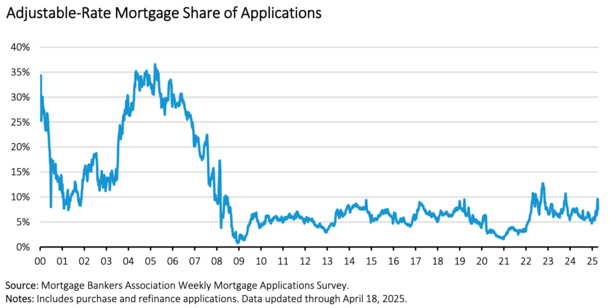New proprietary reverse mortgages hit the market this spring
unitedbrokersinc_m7cmpd2025-05-30T16:22:31+00:00With tappable home equity near historic highs and a preference among a majority of baby boomers to remain in their homes, several reverse mortgage lenders have recently launched products to capture the greater opportunity in this part of the market. Demographic trends suggest a market primed for growth and current interest rate levels also make home equity loans appealing. The National Reverse Mortgage Lenders Association found tappable equity among homeowners 62 and older stood at almost $14 trillion at the end of 2024. At the same time, over two-thirds of the baby boomer generation born between 1946 and 1964 indicated they hope to age in place, according to Freddie Mac research, prompting businesses to turn their attention to the reverse mortgage market. While the Federal Housing Administration's Home Equity Conversion Mortgage has been a popular draw option available to seniors for years, 2025 arrived with the launch of several new proprietary loan products from the top reverse lenders intended to complement HECMs.Differentiating themselves from the HECM program, which has a minimum eligibility age of 62, reverse mortgage lenders often open up their proprietary offerings to a wider age range and offer a larger maximum amount. Like HECMs, though, the proprietary loans require homeowners to make regular timely payments on property tax, insurance and maintenance fees.While some proprietary mortgages have been on the market for years, following are a few of the new additions arriving on the scene in the first few months of 2025.Longbridge offerings preserve equity, offer higher LTVsLaunched in May, Longbridge Financial's Platinum Preserve reverse mortgage allows homeowners to take out a portion of available equity for the loan, while setting aside between 10% and 40% of their property's value for future needs or as a bequeathal to heirs or other beneficiaries. "We designed Platinum Preserve with that in mind — to help retirees unlock some of the equity in their home today, while still preserving a meaningful portion for the future. It offers the best of both worlds: more financial freedom now, while leaving a legacy down the road," said Longbridge CEO Christopher Mayer in a press release.Unlike HECMs, the fixed-rate loan does not require mortgage insurance at origination, which can lower upfront costs. Platinum Preserve is currently offered in 21 states for borrowers 55 and older with homes valued at $450,000 or more. The new product comes following the release earlier this spring of another addition to Longbridge's proprietary portfolio. Platinum Peak was created for borrowers valuing maximum proceeds over rate sensitivity. With higher loan-to-value ratios than other types of reverse mortgages, the product makes home equity available to borrowers who previously might have been short to close. Longbridge expects Platinum Peak to appeal to reverse borrowers on the younger end of the eligibility scale with immediate needs to take a large draw on equity. PHH Mortgage returns to proprietary market with EquityIQPHH, a subsidiary of Onity Group, recently re-entered the proprietary reverse space in April with EquityIQ. The product will be marketed under PHH's Liberty Reverse Mortgage brand and made available through its wholesale channel. With a maximum available loan amount of $4 million, well above the HECM maximum, EquityIQ similarly does not require upfront mortgage insurance. PHH will require parties to the loan to receive approved mortgage counseling. "We believe EquityIQ can be a valuable option for our wholesale partners and their clients, and we look forward to continuing to expand our product options," said PHH Mortgage chief growth officer Rich Bradfield.The company previously launched a proprietary loan prior to Covid-19 but discontinued the offering earlier this decade. Mutual of Omaha launches SecureequityAlso with the same $4 million maximum loan limit, Mutual of Omaha introduced Secureequity earlier this year, specifically aimed at homeowners aged 55 or older who own high-value properties. Eligibility requirements for Secureequity largely fall in line with those of other proprietary reverse loans. Borrowers can receive proceeds in one lump sum or establish a line of credit.

